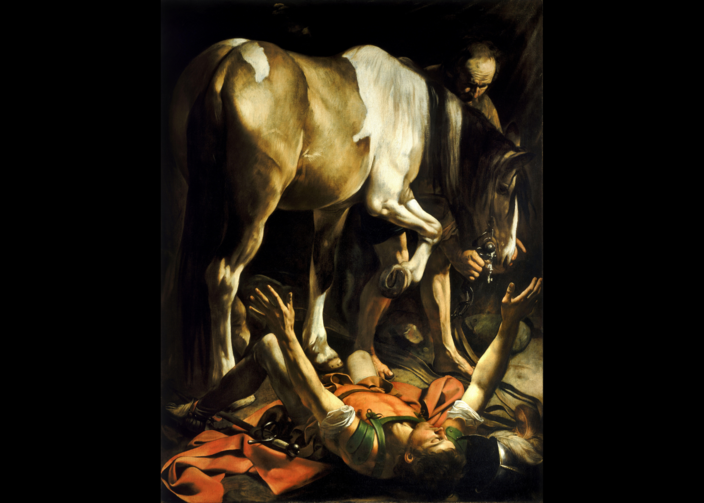A Reflection for the Feast of the Conversion of St. Paul, Apostle
Immediately things like scales fell from his eyes
and he regained his sight.
When I was 14, I had a major jaw surgery that changed the inside of my mouth so significantly that I had to re-learn how to speak. Not that I couldn’t say words, but all of the things you ordinarily never have to think about—where your tongue hits your hard palette to say a “t”, where your front teeth are to form a “th”, even where to rest your tongue so you don’t bite it when you close your mouth—suddenly became subjects of intense concentration, study and trial and error. I really can’t articulate just how disorienting it was to learn to navigate and use what felt to me like an entirely new mouth.
In today’s reading, St. Paul—still known as Saul when the story begins—is traveling to Damascus “still breathing murderous threats against the disciples of the Lord,” carrying papers with him that will allow him to arrest any Christians and bring them back to Jerusalem in chains. In a moment immortalized so memorably by the likes of Michelangelo and Caravaggio, a blinding light quite literally knocks Paul off his high horse. (There is no horse in the story, but by the Renaissance it was a well-worn iconographic trope.) Saul, stretched out on the ground, groping around, hears a voice: “Saul, Saul, why are you persecuting me?” He asks whose voice it is. “I am Jesus, whom you are persecuting.”
After this, Saul cannot see and does not eat or drink for three days, until a Christian named Ananias—who was rightly scared to face this notorious persecutor—comes to restore Saul’s sight in Jesus’ name. Here we get the Biblical image of “things like scales” falling from Saul’s eyes. I have a hard time imagining what this looked like, some kind of fish-skin eye patch situation, but I think my recovery gives me a sense of what it felt like, or at least something analogous. In my surgery, my jaw had to be broken. At his conversion, Saul’s eyes were blinded. You simply can’t come back from that the same. So I imagine that just as I had to learn to speak and eat anew as my swelling went down, Saul had to learn to see anew as the scales fell from his eyes.
That kind of recovery is an incredibly vulnerable state of being, and we hear that Saul stays with the disciples in Damascus for several days, presumably being cared for by them or those close to them as he regains his strength and gets used to his new vision. In this time, he is baptized. He eats again. (Interestingly, the reading says he is baptized before it says he eats. Imagining how hangry he probably was after three days without food really gives a sense of how urgently he wanted to be baptized!) And when he regains his strength, he begins preaching Jesus in the Synagogues.
But it isn’t just his vision that has changed: He has changed. And I imagine that took some time for him to get used to. Maybe that’s why it takes a few more chapters before he begins to be called Paul.








